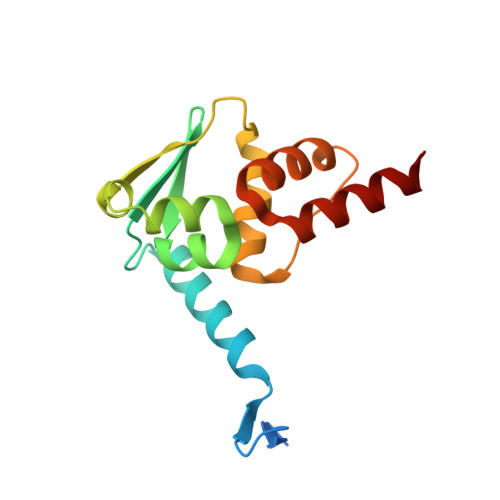Optimizing Shape Complementarity Enables the Discovery of Potent Tricyclic BCL6 Inhibitors.
Davis, O.A., Cheung, K.J., Brennan, A., Lloyd, M.G., Rodrigues, M.J., Pierrat, O.A., Collie, G.W., Le Bihan, Y.V., Huckvale, R., Harnden, A.C., Varela, A., Bright, M.D., Eve, P., Hayes, A., Henley, A.T., Carter, M.D., McAndrew, P.C., Talbot, R., Burke, R., van Montfort, R.L.M., Raynaud, F.I., Rossanese, O.W., Meniconi, M., Bellenie, B.R., Hoelder, S.(2022) J Med Chem 65: 8169-8190
- PubMed: 35657291
- DOI: https://doi.org/10.1021/acs.jmedchem.1c02174
- Primary Citation of Related Structures:
7Q7R, 7Q7S, 7Q7T, 7Q7U, 7Q7V - PubMed Abstract:
To identify new chemical series with enhanced binding affinity to the BTB domain of B-cell lymphoma 6 protein, we targeted a subpocket adjacent to Val18. With no opportunities for strong polar interactions, we focused on attaining close shape complementarity by ring fusion onto our quinolinone lead series. Following exploration of different sized rings, we identified a conformationally restricted core which optimally filled the available space, leading to potent BCL6 inhibitors. Through X-ray structure-guided design, combined with efficient synthetic chemistry to make the resulting novel core structures, a >300-fold improvement in activity was obtained by the addition of seven heavy atoms.
Organizational Affiliation:
Cancer Research UK Cancer Therapeutics Unit, The Institute of Cancer Research, London SM2 5NG, U.K..

















